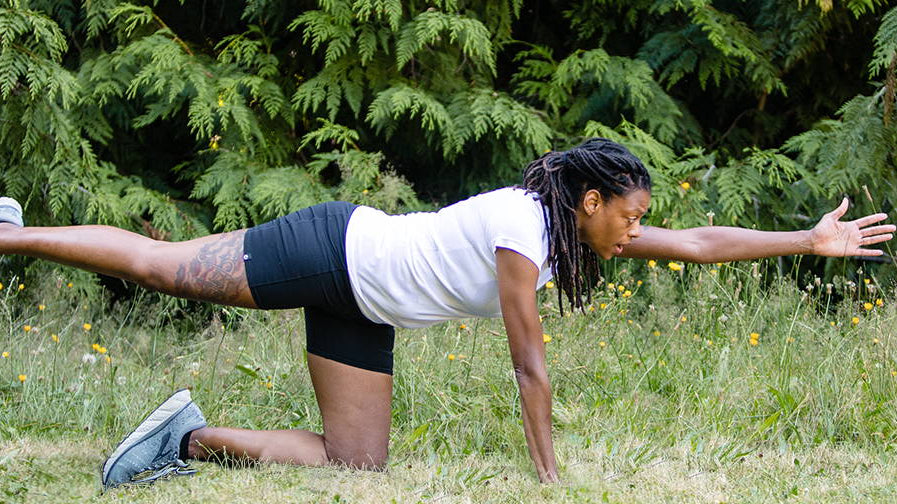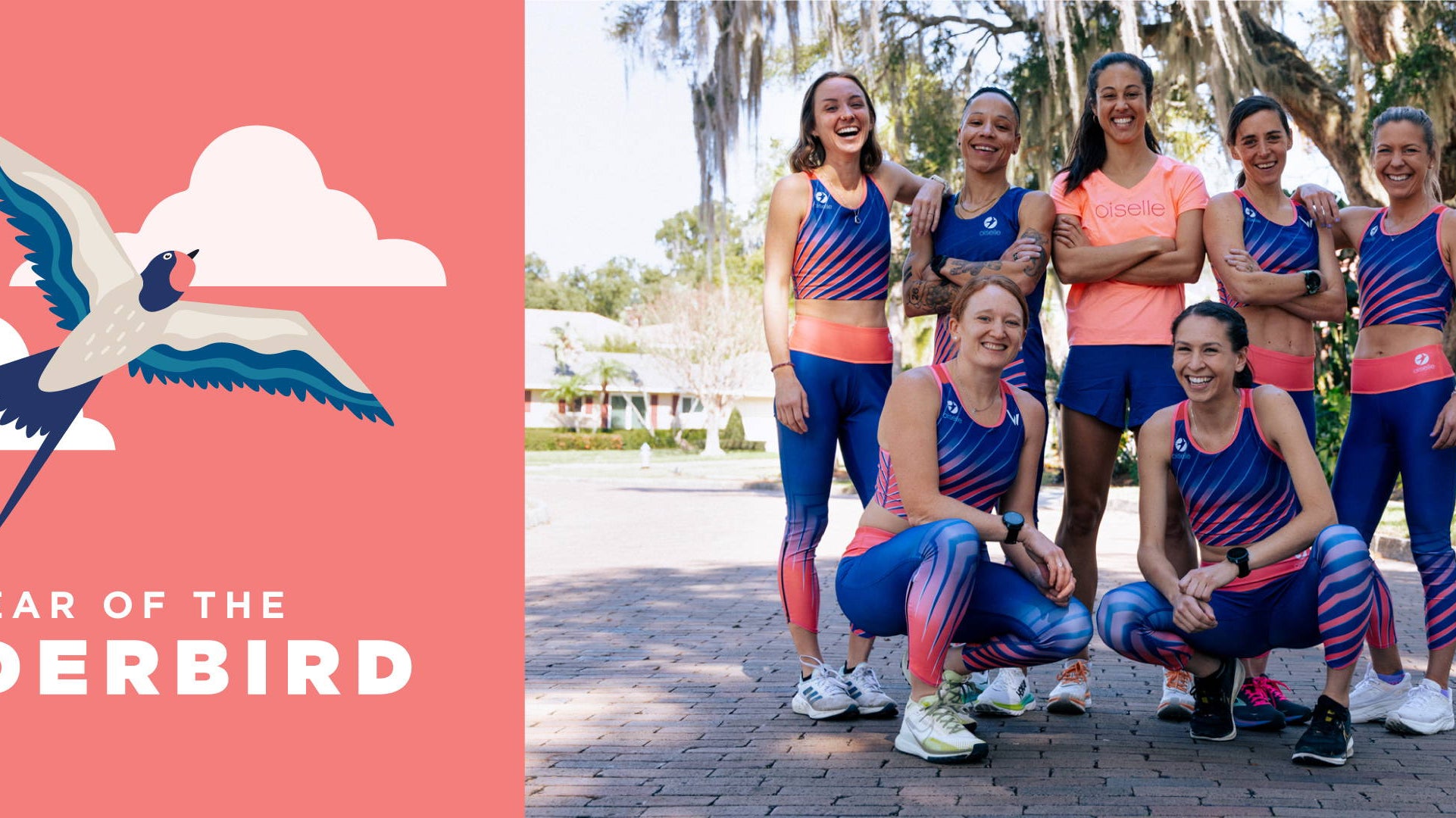There has been so much discussion about the new Olympic qualification standards (times and rankings), and the IAAF decision to discontinue the track 5k and 10k at Diamond League meets. To help understand some of the nuances, I recommend Mario Fraioli’s AM Shakeout with a very insightful commentary by Atlanta Track Club’s Rich Kenah, and Outside Magazine’s article. We wanted to hear from our own athletes on their opinions and feelings. Help us continue the discussion as we all continue to work on improving our sport!
Lauren Fleshman (on discontinuing the 5k and 10k): Twitter thread
Kara Goucher: I am super sad to hear that the 5000m and 10000m will no longer be contested at Diamond League meets. The 5000 is a true mid-distance event, and the 10000 is the ONLY distance event on the track. These events have historical context, we can compare generation after generation. We can look back and compare ourselves against the greats. I know people get tired of seeing rabbited races, but that is no reason to pull the event all together! Set some new guidelines- how about only 2 of the 4 diamond league races can have rabbits? Then half of the time we get to see true gritty head to head racing. And if you are sick of rabbited races, eliminating them at major diamond league races all but ensures that the few races left will be in that format. After all, how else will people be able to go for personal or national records when their opportunities are so limited? The 5000 and 10000 are also races that are contested by the masses, they understand these events! Why take away the races they can actually have some contextual relation to?
I think the biggest problem is how we show these events. We show the first few laps, cut away and show other things, only to come back for the final lap. All the drama was missed! Show these races at full length. Tell stories about the competitors, tell their history, talk about their rivalries. Explain why these races matter, why the times they are running matter. You have time to draw the audience in. One of my good friends, Chad Salmela, does the Olympic Biathlon commentating. Now I have done biathlon, but I know I am in the minority! Yet Chad explains what the audience is seeing, draws people in with the excitement in his voice. People love watching races he commentates on- they are learning along the way with them and they need to find out how it ends! They leave with an appreciation of the sport and of the athletes they just watched. This is what we need in track and field.
Our sport is so special. People can watch us and think, “I think I’m going to enter a 5k!” How many other sports does this happen in?! We have the opportunity for a huge fan base. Why are we killing so much of what makes it great? I am so saddened by this news.
Anna Weber (marathon): I will start by saying that I don't think any changes should have been made mid-Olympic cycle, since many athletes plan their lives 4 years at a time. However, if I am looking at these changes purely from a personal perspective, they have made me excited. A sub-2:30:00 marathon is my lifetime goal. I believe the new standard will cause people to aim higher than ever before, which will ultimately foster the next class of even faster American distance runners. For me, sub-2:30:00 now has a greater "do-or-die" incentive, which is a challenge I enjoy. I hope USATF finds a way to keep the excitement of the Olympic Trials alive. If not, perhaps more emphasis will be placed on the USATF road racing circuit from both a fan and elite/sub-elite athlete perspective. More broadly, I am curious to see how these stricter standards affect world competition at the Olympic level. I don't fully understand the world ranking system, but I hope IAAF will find a way to allow underrepresented countries to still have representation in events like the marathon, even if the time standard has not been met.

Becki Spellman (marathon): My knee jerk reaction was jaw on the floor...Fuck that is fast. All I could think. Straight down the line of numbers. Then I began to think "who does this benefit?" I fear that it will take away opportunities from athletes that should have a chance to represent their countries. But I know that women are strong and, in my experience, they will rise to the occasion. For example, in 2008 the trials standards were 2:39 for the A, and 2:47 for the B-14 women and 144 women respectively hit those times for 158 total qualifiers. The standards were slightly tightened for 2012 A standard remained 2:39, and the B standard was 2:46- 41 and 138 women respectively hit those standards for 179 total qualifiers. 2016 the A standard was moved to 2:37 and the B to 2:43- 42 women ran the A and 117 ran the B. The standard was retracted and made 2:45 at a later date allowing 39 additional women the chance to compete for 198 total. For 2020 the standards remain at 2:37 for the A and 2:45 for the B with 58 A standards and 223 B standards already obtained for a total of 281 women qualified. So while the standard has tightened over the years you can see that women have simply risen to the occasion. While I am still not sure who it really benefits to make the standards drastically so much faster, I think it will push women to be brilliant athletes. I think we will strive to a new level. I fear that some will use unfair methods to get there. However, my real hope is that women will see this as a way to try and better ourselves, to work with resolve toward a new goal, and to know that if we miss, it brought out the best in us.
Paula Pridgen (marathon): In general, I'm confused. However, I think a lot of runners and fans of the sport are currently speculating what the potential impacts will be from the new Olympic standards. First, I wonder if it's going to become harder to qualify for the Olympic Marathon Trials in the future. I've read that the US only loosened the women's standard from 2:43 (original 2016 standard) to 2:45 because the US standard couldn't be harder than the Olympic standard. Now that the standard is 2:29:30, I wouldn't be surprised to see the Trials standard become more difficult. Second, things could get interesting if one places in the top three at the Trials but doesn't have the standard. For example, the runner may have qualified for the Trials with a half marathon time. Then, the Trials race is slow and the runner places in the top three but with a time slower than the Olympic standard. It is my understanding that the runner would have to then qualify for the Olympics based on world ranking in the marathon. Lastly, I do think that it is clear that the new standard may negatively impact smaller countries with a less competitive pool of candidates since these countries may not have any runners that can meet the new standard or qualify based on world rankings.
Sasha Gollish (5k to marathon): I sure am a scramble of thoughts on this. And I am really interested to hear what my teammates have to say on the issues.
- It was really interesting to chat with Val about this. We live in this bubble of distance running and I was really interested to hear what she had to say. I’ll leave her to comment on how the IAAF can make throwing events more spectator friendly, but I think it’s interesting that no one really chats about the throwers or jumpers - and they are so important too! Right?!
- I wish the IAAF had done this in consultation with athletes - let me rephrase that. This feels like the IAAF presented a new framework without any external consultation. I love going to throwing and jumping carnivals and getting into with the crowd. And both Val and my friend Sultana (Canadian Hammer Thrower) say these really make people throw far. Imagine sitting behind the cage and really getting a chance to watch Val and her footwork in the circle and screaming alongside her as that discus goes flying?!
- To the standards, at first I thought well Fawk, way to make it chock full of drugs, Sebby Coe. And I still believe that this will lead to incentivizing people to cheat. But I also got to thinking about the athletes who just squeak through, the ones who just make standard, and then go out put it all out there and have smashing performances. That to me is what the Olympic Games is all about. Higher. Faster. Stronger. Tougher. Together.
- As the standards relate to me. Well I had to get a tattoo. Although, haven’t told anyone back home yet. But I’m going to take those risks so that I get the opportunity to fly. Because, right?! Those moments of setbacks, even failure, they make those moments of success feel oh so much more worth it. So I’m going to do what it takes to take the risk.
(Full Poem is …
There is freedom waiting for you,
On the breezes of the sky,
And you ask “What if I fall?”
Oh but my darling
What if you fly?
~ Erin Hanson)
Andie Cozzarelli (marathon): I have countless times seen runners do remarkable things. Big PR’s and breakout performances are common but only because athletes in our sport see an opportunity and a chance and they go for it. These performances create more opportunity and more advancement. When we make standards too high, we neglect giving every athlete the opportunity to try. How many of our top runners today would not have put forth the effort if they were staring down a standard that felt completely out of reach? Then what about the competitive nature of our sport? It feels like these new qualification standards put an increased focus on reaching a time. Watching the Olympic trials and the tactical nature that ensues in both the marathon and on the track is part of what makes it exciting. Will we lose that if we are chasing absurd standards? Additionally I think this new set of standards will keep smaller nations out of the Olympics and will continue to suppress athletics within these countries. What reason would any of these federations have to make qualifying for the Olympics harder? Will sponsors be less willing to put up money to support athletes if the chances of their athletes making it to the very top are even smaller? I am chasing an OTQ right now but what does that mean if I would still be 10-15 min off the standard? Anything can happen when we step up to the line. Why not give everyone the opportunity to dream?

Bethany Drake (javelin): I have split feelings about the increase of the new Olympic standards. For women’s javelin, it is up 2 meters from 2016— and 2.5 meters off of the American record. As a developing American athlete— it’s lofty. But as an enthusiast of the sport— it’s motivating and exciting.
Javelin as an event is growing at an international level, and I think the new standards and qualification system will help get the top athletes in the sport to the Olympics, the pinnacle of our sport. But, for developing athletes and developing countries— it creates a potential barrier to participation and opportunity.
US Championship/Olympic Trial top 3:
2017- 62.80m, 58.32m, 55.28m
2016- 60.84m, 58.19m, 57.90m
2015- 64.94m, 61.80m, 59.57m
World Championship/Olympic top 3:
2017- 66.76m, 66.25m, 65.26m
2016- 66.18m, 64.92m, 64.80m
2015- 67.69m, 66.13m, 65.79m
If you compare the top 3 marks at the US Championships versus the World Championships for 2015-2017, there’s a pretty strong discrepancy.
But, as they say, if your dreams don't scare you, you're not dreaming big enough.

Riley Cooks (heptathlon): To be honest I haven’t actually given it a ton of thought since it not something I have any control over…to me the standards have always been something that will take a lot of work to get to, but regardless of the mark I will still train the same and score as high as I can.
Maria Michta-Coffey (race walk): The ranking system really pigeon-holes athletes into which meets they must compete at. It requires more international racing, which requires more international travel and thus expenses as most of the competitions that will count towards the point system are not in the US. It’s much easier for Europeans to hop around in Europe than it is for North Americans or isolated countries like Australia or New Zealand. It makes it virtually impossible for an athlete to have a breakthrough performance at Olympic Trials and make the Team because he/she won’t have accumulated enough points at enough pre-approved competitions. Forcing athletes’ hands into which meets and competitions they must compete at only limits the expansion of our sport further empowering the haves over the have-nots.

Valarie Allman (discus): The IAAF’s announcement and approval of their new core principles for the 2020 Diamond League concept has me left with mixed feelings. The goal to create a high quality, rewarding circuit for athletes, action packed broadcasting format, and fan focused environment sounds like a wonderful combination that ultimately would enhance and celebrate the sport of track and field. However, in cutting 8 disciplines from the circuit, I am left with the question... is it truly a showcase of the sport as a whole?
As a thrower, if some of our disciplines were to be removed from the circuit, I find myself worried about their future and longevity. I agree with the IAAF President when he said, “change is never easy”. My simple hope is that as the sport continues to evolve no disciplines become extinct in the process.











